THE VISUAL REVOLUTION: Russian Avant-Garde Photography
THE VISUAL REVOLUTION: Russian Avant-Garde Photography, featuring work by Alexander RODCHENKO and VKhUTEMAS Workshop, coincides with the 2014 UK-Russia year of culture. The exhibition presents a special selection of work by these leading practitioners of Russian avant-garde photography.
This comprehensive exhibition is drawn from a single renowned collection, which comprises more than 1,500 vintage photographs. The collection was built in the early part of the 21st century and includes photographs from the Constructivist period (1920s), the Socialist-Realist period (1930s) and World War II photography. There are over 100 photographers represented, with a significant number by Max Alpert, Simon Fridland, Naum S Granovski, Yevgeni Khaldei, Gustav Klutsis, Alexander Rodchenko, Akady Shishkin, Varvara Stepanova and Georgi Zelma.
-
 Max Alpert, Untitled (Dnepr Dam)
Max Alpert, Untitled (Dnepr Dam) -
 Georgi Lipskerov, Paransha. Burka, Central Asia
Georgi Lipskerov, Paransha. Burka, Central Asia -
 Georgi Zelma, View from the top of the 'Bolshoi Theatre', Moscow, 1950s
Georgi Zelma, View from the top of the 'Bolshoi Theatre', Moscow, 1950s -
 Georgi Zelma, Petrusov and Shaikhet
Georgi Zelma, Petrusov and Shaikhet -
 Alexander Rodchenko, Zhenshchina s kolyaskoi (Woman with baby carriage), 1928
Alexander Rodchenko, Zhenshchina s kolyaskoi (Woman with baby carriage), 1928 -
 Alexander Rodchenko, Portrait of Lili Brik, 1924
Alexander Rodchenko, Portrait of Lili Brik, 1924 -
 Alexander Rodchenko, The Sculptor Anton Lavinsky, 1924
Alexander Rodchenko, The Sculptor Anton Lavinsky, 1924 -
 Alexander Rodchenko, Ulichnaya torgovlya (Street Vendors), 1929
Alexander Rodchenko, Ulichnaya torgovlya (Street Vendors), 1929 -
 Alexander Rodchenko, Canteen at the Electric Plant, 1929
Alexander Rodchenko, Canteen at the Electric Plant, 1929 -
 Alexander Rodchenko, Skverik u Bolshom teatre. Bolshoi Theatre Square, 1932
Alexander Rodchenko, Skverik u Bolshom teatre. Bolshoi Theatre Square, 1932 -
 Alexander Rodchenko, Military Parade, 1935-36
Alexander Rodchenko, Military Parade, 1935-36 -
 Alexander Rodchenko, Stadium Dinamo (Dynamo Stadium), 1936
Alexander Rodchenko, Stadium Dinamo (Dynamo Stadium), 1936 -
 Alexander Rodchenko, Pryzhok s shestom (High Jumper), 1937
Alexander Rodchenko, Pryzhok s shestom (High Jumper), 1937 -
 Alexander Rodchenko, Varvara Stepanova, c. 1935
Alexander Rodchenko, Varvara Stepanova, c. 1935 -
 Vkhutemas Workshop, 148. Vkhutemas, IV_4_13(8), 1920s
Vkhutemas Workshop, 148. Vkhutemas, IV_4_13(8), 1920s -
 Vkhutemas Workshop, 262. Vkhutemas IV-5-43, 1920s
Vkhutemas Workshop, 262. Vkhutemas IV-5-43, 1920s -
 Vkhutemas Workshop, 233. Vkhutemas IV-4-13, Volume Study. Dynamic Composition, 1920s
Vkhutemas Workshop, 233. Vkhutemas IV-4-13, Volume Study. Dynamic Composition, 1920s -
 Vkhutemas Workshop, 237. Vkhutemas IV-4-13, Volume. Dynamic Composition, 1920s
Vkhutemas Workshop, 237. Vkhutemas IV-4-13, Volume. Dynamic Composition, 1920s -
 Vkhutemas Workshop, 122. Vkhutemas IV-5-28, 1920s
Vkhutemas Workshop, 122. Vkhutemas IV-5-28, 1920s -
 Vkhutemas Workshop, 210. Vkhutemas IV-5-44, Study of Mass and Weight, 1920s
Vkhutemas Workshop, 210. Vkhutemas IV-5-44, Study of Mass and Weight, 1920s -
 Vkhutemas Workshop, 214. Vkhutemas IV-5-44, Study of Mass and Weight, 1920s
Vkhutemas Workshop, 214. Vkhutemas IV-5-44, Study of Mass and Weight, 1920s -
 Vkhutemas Workshop, 110. Architectural Study IV-5-44, 1920s
Vkhutemas Workshop, 110. Architectural Study IV-5-44, 1920s -
 Vkhutemas Workshop, 46. Architectural Design IV-5-37, 1920s
Vkhutemas Workshop, 46. Architectural Design IV-5-37, 1920s -
![VKhUTEMAS [Workshop] Architectural Design, IV-5-37, 1920s Vintage gelatin silver print 6 x 5.3 cm](data:image/gif;base64,R0lGODlhAQABAIAAAAAAAP///yH5BAEAAAAALAAAAAABAAEAAAIBRAA7) VKhUTEMAS [Workshop]Architectural Design, IV-5-37, 1920sVintage gelatin silver print6 x 5.3 cm
VKhUTEMAS [Workshop]Architectural Design, IV-5-37, 1920sVintage gelatin silver print6 x 5.3 cm
-

Installation view at Richard Saltoun Gallery for THE VISUAL REVOLUTION exhibition.
-

Installation view at Richard Saltoun Gallery for THE VISUAL REVOLUTION exhibition.
-

Installation view at Richard Saltoun Gallery for THE VISUAL REVOLUTION exhibition.
-

Installation view at Richard Saltoun Gallery for THE VISUAL REVOLUTION exhibition.
-

Installation view at Richard Saltoun Gallery for THE VISUAL REVOLUTION exhibition.
-

VKhUTEMAS WORKSHOP at Richard Saltoun Gallery for THE VISUAL REVOLUTION exhibition.
-

VKhUTEMAS WORKSHOP at Richard Saltoun Gallery for THE VISUAL REVOLUTION exhibition.
THE VISUAL REVOLUTION: Russian Avant-Garde Photography, featuring work by Alexander RODCHENKO and VKhUTEMAS Workshop, coincides with the 2014 UK-Russia year of culture. The exhibition presents a special selection of work by these leading practitioners of Russian avant-garde photography.
This comprehensive exhibition is drawn from a single renowned collection, which comprises more than 1,500 vintage photographs. The collection was built in the early part of the 21st century and includes photographs from the Constructivist period (1920s), the Socialist-Realist period (1930s) and World War II photography. There are over 100 photographers represented, with a significant number by Max Alpert, Simon Fridland, Naum S Granovski, Yevgeni Khaldei, Gustav Klutsis, Alexander Rodchenko, Akady Shishkin, Varvara Stepanova and Georgi Zelma.
Though used in Soviet Russia since the turn of the twentieth century, it was not until the Social Revolution of 1917 that the photographic medium was privileged over painting. Its documentary and artistic capabilities were quickly exploited for State propagandistic purposes: portraying a 'truthful' depiction of everyday life, culture, and architecture of the New Soviet State.
One of the greatest innovators of the 20th century avant-gardes and an acknowledged leader of Russian Constructivism, Alexander Rodchenko's artistic oeuvre has influenced design, architecture and 'photo-art'. A student at the Stroganov art school in Moscow, he started using photography in 1924 and it was during the first Five-Year plan (1928-32) that he truly exploited it as a medium. Recognizing the capabilities of the photographic image, he revolutionized the way it was used as a medium. Inspired by Moholy-Nagy's experimental photographic technique, Rodchenko merged traditional formal elements with innovative perspectives: 'bird's eye', 'worm's eye' views and the application of diagonal perspectives to street scenes. Photography was for him a tool to depict the discrepancy between 'high' and 'low' culture in Soviet society, balancing formal concerns with a focus on documenting contemporary social and political life.
From intimate portraits to street scenes, from dynamic architectural analysis to photomontage, his revolutionary practice re-established the role of photography and of the photographer himself. Key works to be included are Woman With a Baby (1928), Portrait of Mayakovsky(1924) and Portrait of Varvara Stepanova (1925). Rodchenko has deeply influenced later generations of artists, through his own work as well as through his tutelage as a leading professor of leading Moscow art school, the VKhUTEMAS Workshop.
The VKhUTEMAS Workshop had a brief but significant existence, established 1920 and dissolved in 1930. Its impact both at the time and now is tremendous, as the Workshop furthered the development of constructivism and rationalism in architecture. Though contemporaneous to the Bauhaus (1919-1933), the VKhUTEMAS Workshop has never achieved the same status or degree of prominence but its legacy endures within art historical circles. A curated selection of works by the VKhUTEMAS Workshop to be exhibited include photographs by leading artists Alexander Rodchenko, Gustav Klutsis and Varvara Stepanova, alongside works by lesser-known students at the school.
Alexander Rodchenko (1981-1956) is considered one of the great innovators of the twentieth-century avant-garde, who has to continued to influence future generations of artists. An artist under the intellectually exploratory Lenin years as well as under the strict cultural regime of Stalin, his work consistently remained daring and innovative. Major recent exhibitions include Alexander Rodchenko (Palazzo delle Esposizioni, Rome, 2012), Rodchenko and Popova: Defining Constructivism (Tate Modern, London, 2009), Alexander Rodchenko (Hayward Gallery, London, 2008).
Created by Vladimir Lenin in 1920 under the name 'Higher Art and Technical Studios', the school VKhUTEMAS Workshop (1920-193) was formed by the merging of the Stroganov School of Industrial Art and the Moscow School of Painting. Abandoning traditional curriculum and encouraging the avant-garde, the school quickly became the leading art school in the post-revolutionary period. Key instructors were: Aleksandra Exter, Kazimir Malevich, Liubov Popova, Alexander Rodchenko and Nadezhda Udaltsova.



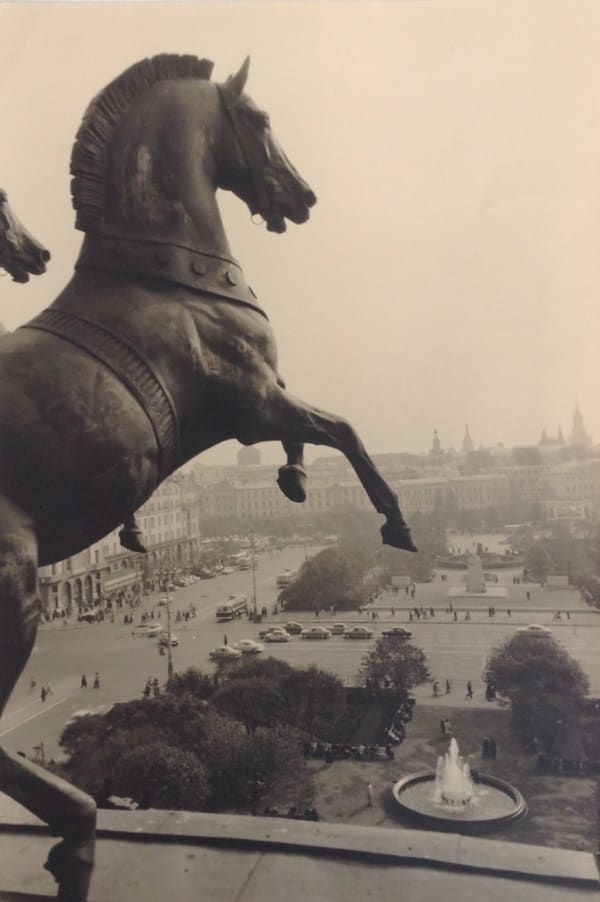




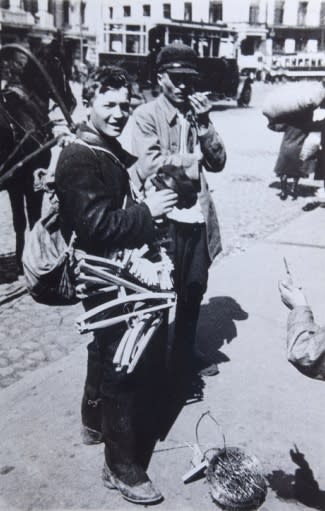
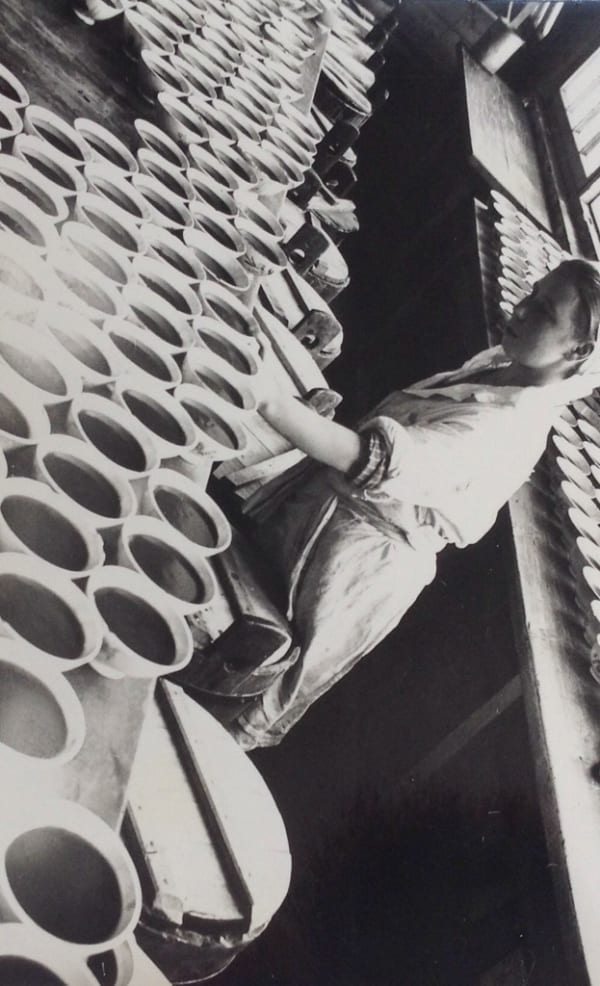







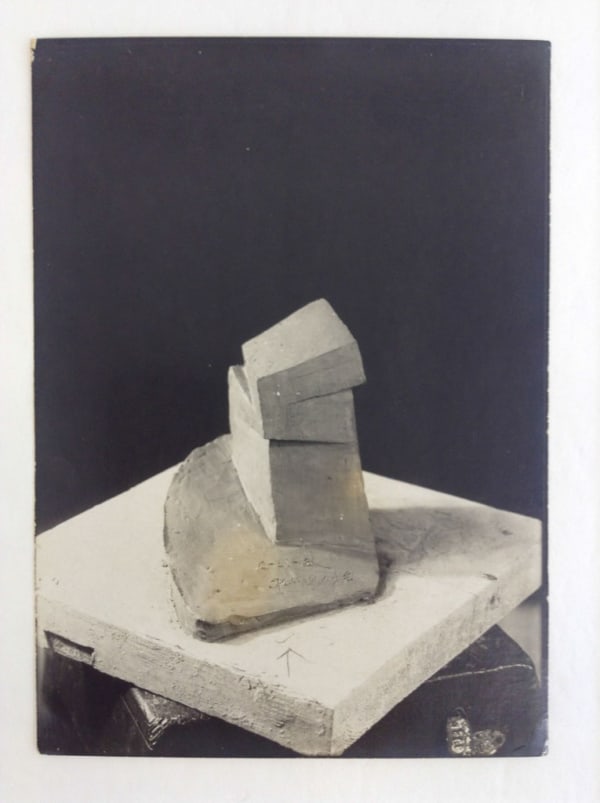





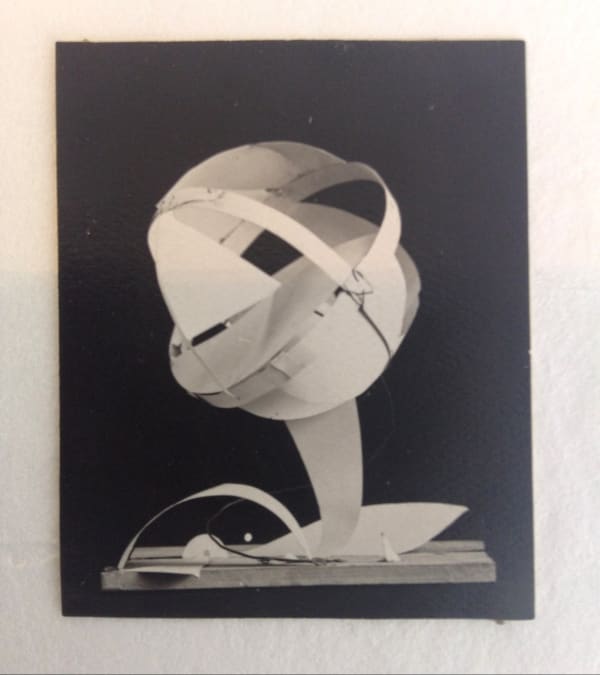
![VKhUTEMAS [Workshop] Architectural Design, IV-5-37, 1920s Vintage gelatin silver print 6 x 5.3 cm](https://artlogic-res.cloudinary.com/w_600,c_limit,f_auto,fl_lossy,q_auto/artlogicstorage/richardsaltoun/images/view/04b2688063bb55cd0fa58dcccb5b311875c8d95b/richardsaltoun-vkhutemas-workshop-architectural-design-iv-5-37-1920s.jpg)
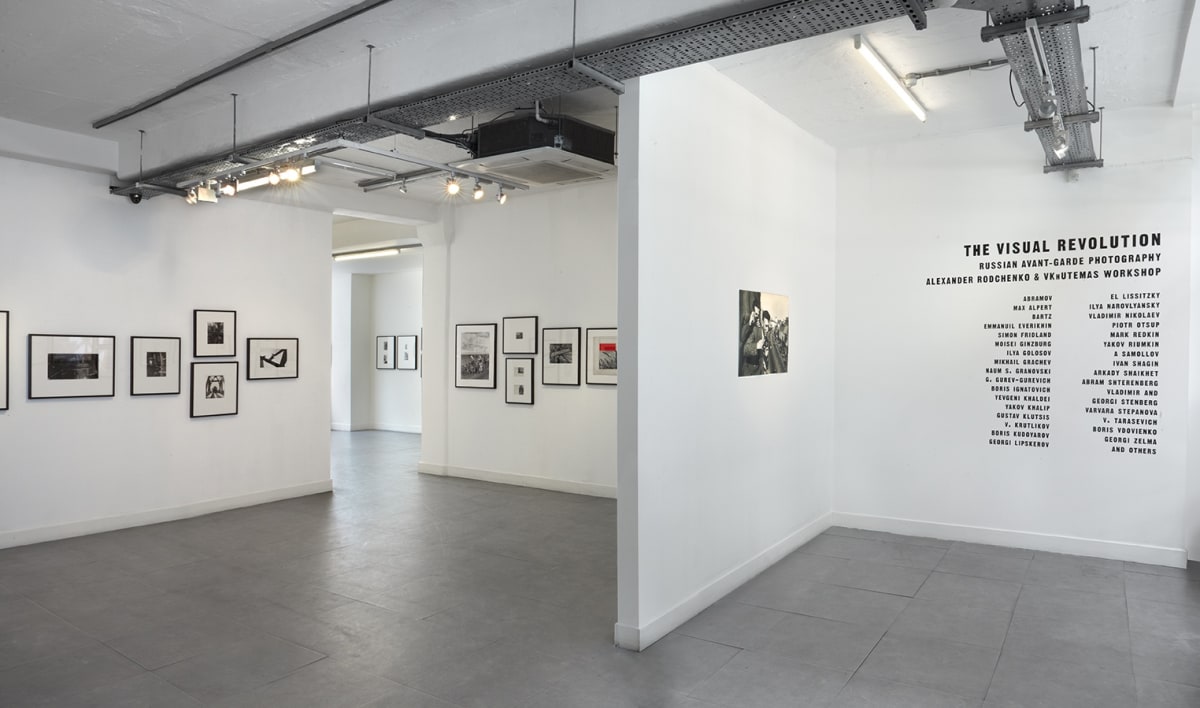






![VKhUTEMAS [Workshop]](https://artlogic-res.cloudinary.com/w_50,h_50,c_fill,f_auto,fl_lossy,q_auto/artlogicstorage/richardsaltoun/images/view/e2dc371d3e661c4eb03b8ec3bd68adad7bb3b0c9/richardsaltoun-vkhutemas-workshop.jpg)